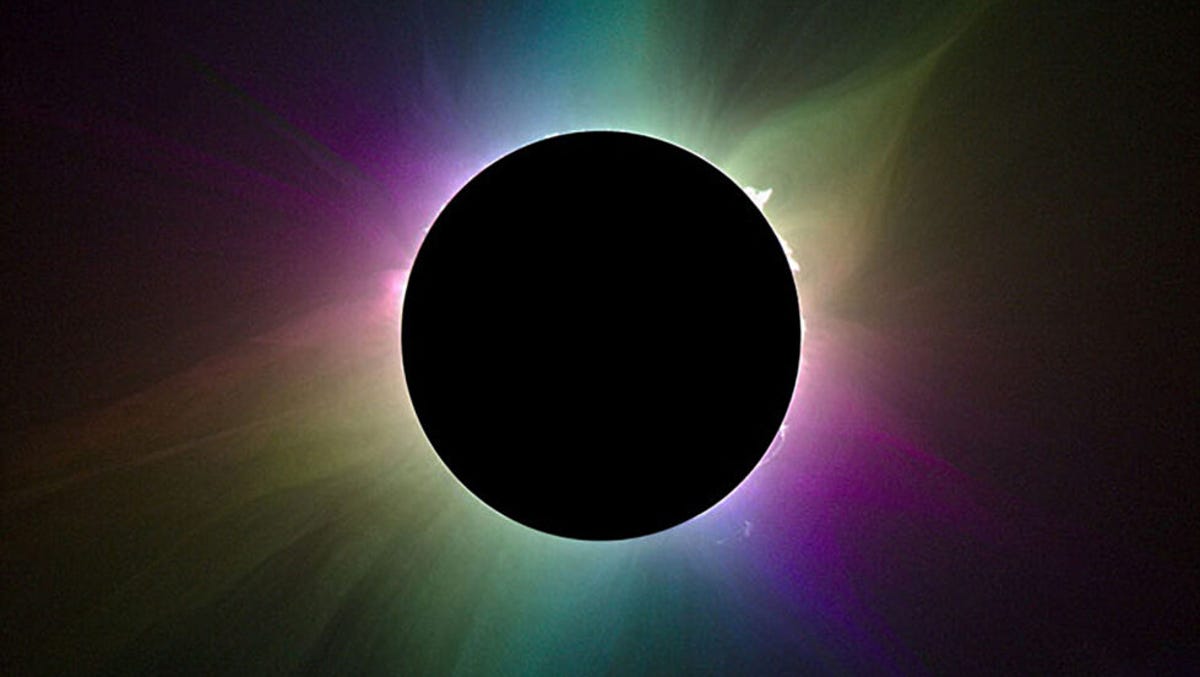For recent Indiana University alumna Rachael Weir, the April 8 solar eclipse is more than just a special event; it’s a science project.
Since last year, she’s been a part of the Citizen Continental-America Telescope Eclipse project, or Citizen CATE, a nationwide community science initiative co-sponsored by the National Science Foundation and NASA that will photograph the sun during totality at 35 sites across the country. The end result, an approximately 60-minute, continuous video of the sun and its outer corona, could bring novel scientific discoveries.
Sites for the Citizen CATE project — which span from Southwest Texas to Maine, with four in Indiana — are run by a national network of volunteers. Working with Weir, NASA, and a team of national coordinators, they’ve been preparing for months to photograph the eclipse during totality with special polarized camera gear. Their goal is to document the appearance and light behavior of the sun’s corona — a part of the sun that’s hard to study from Earth as it’s less bright and less dense than the sun’s surface.
It’s a once-in-a-lifetime scientific opportunity, and thanks to Weir, a big part of it is taking place in Bloomington’s backyard.
Getting Indiana University on the map
Weir first heard of Citizen CATE during her junior year at IU, where she earned her bachelor’s degree last spring in astronomy and astrophysics.
That summer, she was part of the Boulder Solar Alliance program at University of Colorado Boulder. She was working for the National Solar Observatory, but her roommate was working with the Southwest Research Institute on Citizen CATE, a citizen science project that had photographed the eclipse across the country in 2017, and was preparing to do so again with new polarization technology in 2024.
“I was like, ‘Wow, this is really cool. Way cooler than everyone else’s project,’” Weir said. “So when I got back to IU, I reached out to her mentor and asked if there was any way to get involved.”
Luckily, Citizen CATE was just starting its search for sites across the Midwest. And when they saw Bloomington — directly in the path of totality, and ripe with scientific connections — they chose IU as their Midwestern coordinating site, one of only three sites in the U.S.
“We were thinking of local sites, and then they interviewed us for regional coordinators, which kind of took everybody by surprise,” Weir said.
She and her IU mentors and professors John Carini and Catherine Pilachowski interviewed for the regional coordinator positions in January, and by April, Weir was flying to Australia to learn the ropes of photographing an eclipse during the April 20 total eclipse over the North West Cape.
“It was very intense just because we were trying to get as much practice in as we could right before the eclipse, and it didn’t help that part of us just wanted to go to the beach and explore Australia,” Weir said. “But it was an incredible experience.”
A novel scientific opportunity
Aarran Shaw, an assistant professor of physics and astronomy at Butler University and one of Indiana’s state coordinators, explained Citizen CATE’s effort to study the sun’s corona couldn’t be accomplished without its network of volunteers.
“The project would be literally impossible without citizen scientists,” Shaw said. “Any single location will have 2-3 minutes of totality, which is not enough to study what’s happening in the corona. But if you tally that up across the country, you’ve got 60 minutes.”
Shaw explained that although humans have been studying the sun since “the dawn of time,” there’s still not much known about the corona, the sun’s outermost layer that’s impossible to see from Earth as the sun’s center outshines it.
“The fact of the matter is, because it’s so difficult to study the corona because the photosphere is in the way, we actually don’t really know everything there is to know about the sun,” Shaw said.
Shaw says Citizen CATE will present a rare — and novel — opportunity to study the sun’s middle corona, especially with the new polarization technology being used for this year’s eclipse.
“We’re looking at the kind of angle at which the light reaches us, and that’s never been done before,” Shaw said. “In the middle part of the corona that we can see during a total eclipse, there’s all sorts of crazy stuff going on with the magnetic fields.”
From Citizen CATE’s information on solar light, Shaw said scientists can gain new understandings of solar flares (the process responsible for creating aurora borealis at the North Pole), magnetic fields, and solar weather. Weir adds further down the road, it can even help scientists understand how life is formed on other planets.
“With the solar weather affecting Earth, if we better understand that, that can help predict how this works for other stars and other planets, and how they’re being affected by their star,” Weir said.
Inspiring future astronomers
For many involved in Citizen CATE, training, coordinating and troubleshooting for sites across the country is the most difficult part of the project. For John Carini, an IU physics professor and the Midwest regional coordinator for Citizen CATE, it’s also the most rewarding.
“You can’t do citizen science without the citizens,” Carini said. “The idea with a citizen science approach is to bring the science that’s going on into the communities.”
Carini worked with Indiana’s statewide coordinators Shaw and Brian Murphy at Butler to intentionally pick high schools for many of their sites, giving eager science classes and teachers a chance to be at the forefront of scientific discovery. And, in coordinating Indiana’s four sites, Murphy said it was important to select underrepresented schools, including rural communities and schools with a high minority population.
What’s more; once the eclipse is over, these schools will get to keep the telescope and camera equipment.
“They’re the ones that need this most, and I think it’s a really great opportunity for getting these young groups involved in science,” Murphy said.
As a researcher who specializes in black holes and dying stars, Shaw said he’s most excited to learn more about our sun through Citizen CATE, and hopes others can do the same.
“It’s our closest star, surely we should know everything about it by now, right?” Shaw said. “But there’s still so much to learn. That’s what I find fascinating about this project.”
Reach Brian Rosenzweig at [email protected].

Dr. Sarah Adams is a scientist and science communicator who makes complex topics accessible to all. Her articles explore breakthroughs in various scientific disciplines, from space exploration to cutting-edge research.








